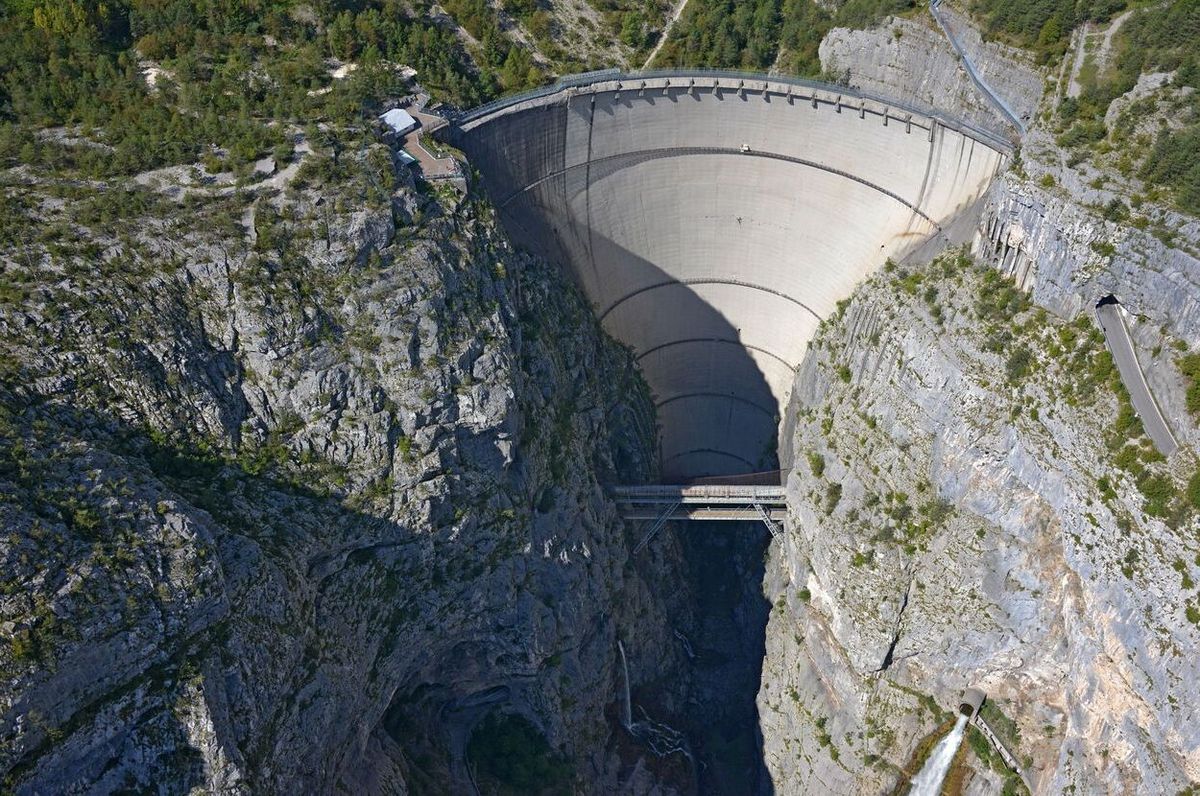
What caused the Vajont Dam disaster? The Vajont Dam disaster, one of the deadliest in history, wasn't due to a structural failure of the dam itself. Instead, a massive landslide from Monte Toc into the reservoir triggered a colossal wave. This wave, over 250 meters high, surged over the dam, obliterating villages downstream. Poor geological assessments and ignoring warning signs from locals and experts about the mountain's instability played a significant role. The disaster, which occurred on October 9, 1963, claimed nearly 2,000 lives. Understanding the Vajont Dam disaster highlights the importance of respecting nature's power and the need for thorough environmental evaluations in engineering projects.
Key Takeaways:
- The Vajont Dam disaster serves as a tragic reminder of the importance of heeding warnings and prioritizing safety in engineering projects, leading to significant changes in dam safety regulations worldwide.
- The disaster had a profound impact on the environment and the lives of survivors, highlighting the need for thorough geological assessments and continuous monitoring of dam structures to prevent similar tragedies in the future.
The Vajont Dam: A Marvel of Engineering
The Vajont Dam, located in northern Italy, was once considered an engineering marvel. However, it became infamous for one of the deadliest disasters in history. Here are some compelling facts about this tragic event.
-
The Vajont Dam was completed in 1960 and stood 262 meters (860 feet) tall, making it one of the tallest dams in the world at that time.
-
It was built to generate hydroelectric power by harnessing the waters of the Vajont River, which flows through the Dolomite Mountains.
-
The dam was constructed in a narrow gorge, which was considered ideal for creating a large reservoir.
Warning Signs Ignored
Despite its impressive design, there were early warning signs that were tragically ignored. These signs could have prevented the disaster.
-
Geologists had warned about the instability of the mountains surrounding the dam, particularly Monte Toc, which loomed over the reservoir.
-
In 1960, a landslide occurred during the dam's construction, causing concern among engineers and geologists.
-
Despite these warnings, the dam's operators continued to fill the reservoir, believing the structure could withstand any potential landslides.
The Catastrophic Landslide
The disaster struck on the night of October 9, 1963, when a massive landslide triggered a deadly wave.
-
Approximately 260 million cubic meters of rock and earth from Monte Toc plunged into the reservoir.
-
The landslide caused a massive displacement of water, creating a wave that surged over the dam's crest.
-
The wave reached a height of 250 meters (820 feet) and traveled at speeds of up to 100 kilometers per hour (62 mph).
The Aftermath
The wave's impact was devastating, leading to widespread destruction and loss of life.
-
The towns of Longarone, Pirago, Villanova, Faè, and Rivalta were completely destroyed by the wave.
-
Over 2,000 people lost their lives in the disaster, making it one of the deadliest dam failures in history.
-
The wave's force was so powerful that it stripped the land of vegetation and soil, leaving a barren landscape in its wake.
Lessons Learned
The Vajont Dam disaster serves as a stark reminder of the importance of heeding geological warnings and prioritizing safety in engineering projects.
-
The disaster led to significant changes in dam safety regulations and practices worldwide.
-
It highlighted the need for thorough geological assessments before constructing large-scale infrastructure projects.
-
The event also underscored the importance of listening to experts and taking their warnings seriously.
Memorials and Remembrance
Today, the Vajont Dam stands as a somber memorial to those who lost their lives in the disaster.
-
The dam itself remains intact, a testament to its engineering, but the reservoir is no longer in use.
-
Memorials and museums have been established in the affected areas to honor the victims and educate the public about the disaster.
-
Survivors and their families continue to commemorate the anniversary of the disaster each year, ensuring that the memory of the tragedy lives on.
The Human Impact
Beyond the physical destruction, the disaster had a profound impact on the lives of those who survived.
-
Many survivors were left homeless and had to rebuild their lives from scratch.
-
The psychological trauma of losing loved ones and witnessing such devastation had long-lasting effects on the community.
-
The disaster also led to legal battles and calls for accountability from those responsible for the dam's construction and operation.
The Role of Media
The Vajont Dam disaster received significant media attention, both in Italy and internationally.
-
Journalists and photographers documented the aftermath, bringing the scale of the tragedy to a global audience.
-
The disaster was covered extensively in newspapers, magazines, and on television, raising awareness about the risks associated with large-scale engineering projects.
-
Documentaries and films have since been made about the disaster, ensuring that the story continues to be told.
Environmental Impact
The disaster had a lasting impact on the environment of the Vajont Valley.
-
The landslide and subsequent wave drastically altered the landscape, creating a barren and scarred terrain.
-
The Vajont River's ecosystem was severely disrupted, affecting local wildlife and plant life.
-
Efforts to restore the environment have been ongoing, but the scars of the disaster remain visible to this day.
Engineering Lessons
The Vajont Dam disaster has provided valuable lessons for engineers and geologists.
-
It emphasized the importance of considering geological factors in the design and construction of dams.
-
The disaster highlighted the need for continuous monitoring of dam structures and surrounding areas to detect potential risks.
-
It also underscored the importance of emergency preparedness and having plans in place to respond to potential disasters.
Cultural Impact
The Vajont Dam disaster has left a lasting mark on Italian culture and history.
-
The tragedy has been the subject of numerous books, plays, and films, reflecting its significance in Italian society.
-
It has become a symbol of the dangers of ignoring expert warnings and prioritizing profit over safety.
-
The disaster has also inspired efforts to improve engineering practices and prevent similar tragedies in the future.
Ongoing Research
Research into the Vajont Dam disaster continues to this day, as experts seek to understand the full extent of the factors that led to the tragedy.
-
Studies have been conducted to analyze the geological conditions that contributed to the landslide.
-
Researchers have also examined the human and organizational factors that played a role in the disaster, aiming to learn from past mistakes and improve future practices.
Reflecting on the Vajont Dam Disaster
The Vajont Dam Disaster remains one of the most tragic engineering failures in history. On October 9, 1963, a massive landslide into the dam's reservoir caused a wave of water to overtop the dam, leading to the deaths of nearly 2,000 people in the Piave Valley. This catastrophe highlighted the importance of geological assessments and the potential dangers of human intervention in natural landscapes.
Lessons learned from this disaster have influenced dam construction and safety protocols worldwide. Engineers now place greater emphasis on understanding the geological conditions of dam sites and the potential impacts of natural events. The Vajont Dam stands as a somber reminder of the need for rigorous safety measures and respect for nature's power.
By remembering this event, we honor the lives lost and strive to prevent similar tragedies in the future.
Frequently Asked Questions
Was this page helpful?
Our commitment to delivering trustworthy and engaging content is at the heart of what we do. Each fact on our site is contributed by real users like you, bringing a wealth of diverse insights and information. To ensure the highest standards of accuracy and reliability, our dedicated editors meticulously review each submission. This process guarantees that the facts we share are not only fascinating but also credible. Trust in our commitment to quality and authenticity as you explore and learn with us.


